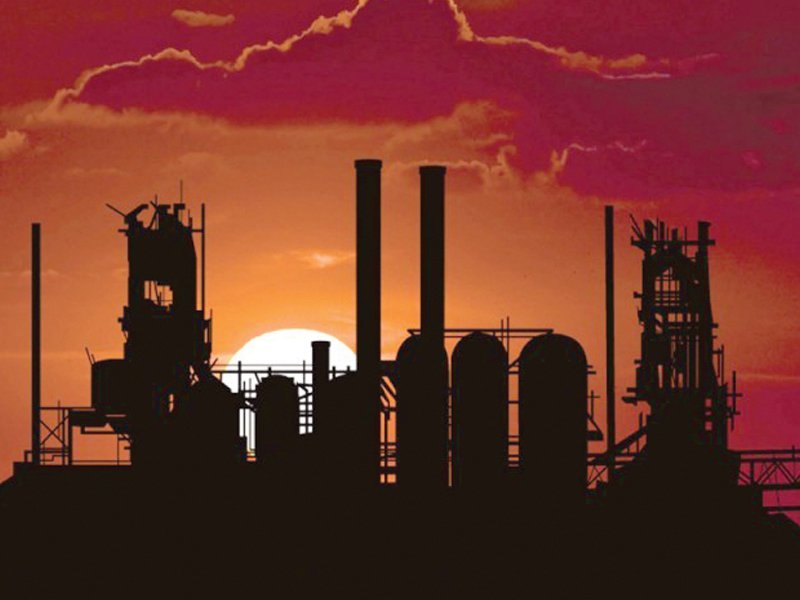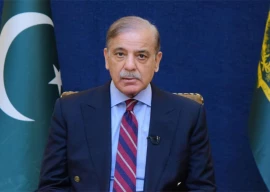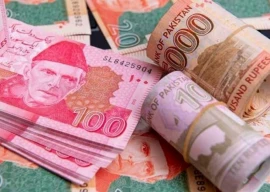
Building on the same argument, it is important to distinguish between ‘good industrialisation’ and ‘just industrialisation’. There is a considerable amount of evidence showing that increasing levels of nominal industrial output do not necessarily translate into broad wealth creation or equitable growth.
Pakistan’s economy for a few years has been experiencing a structural change where the services sector is eating into the share of agriculture in the national income. The share of the industrial sector over the last decade or so has been constant in nominal terms.
Is Pakistan de-industrialising prematurely?
This stagnancy in share, when analysed a bit deeper, raised alarming questions such as are we systematically de-industrialising?, are we becoming a nation of traders?, can we afford to offshore our youth? and why do we continue exporting commodities and not value-added goods?
The private sector, across the board, ponders over these questions and so does the government when they look at the reduction in the share of manufacturing value of gross domestic product (GDP) from a high of 18.5% in 2007 to around 13% now, a 2% fall in the share of large-scale manufacturing in GDP between the same period, fall in exports to $21.6 billion, rise in imports to $48.5 billion and import cover of only 3.5 months.
They also consider debt servicing eating a quarter of export earnings and private consumption still high at 80% of GDP with investment dipping to 15% from 17% in 2000, and an increasing fiscal deficit with serious shortcomings in tax collection.
These indicators suggest a gradual phasing out of the industry in the country’s economy and this will require a Herculean task to reverse. The China-Pakistan Economic Corridor (CPEC) is being viewed as a great event that can support the revival of the declining industrial sector.
Is CPEC the goose that will lay golden eggs?
A contingent ‘yes’, but an inevitable ‘no’.
One must keep emphasising that the basic design of CPEC is that of a transport corridor and not an economic corridor. The economic gains are thus dependent on how effectively one leverages and converts this into a much broader economic engagement at balanced terms.
There is a whole agenda in the long-term plan of the government that talks about industrial cooperation between Pakistan and China. However, the gains from this will only mature if we get our own house in order.
CPEC should not just be an opportunity for the Chinese to colonise the industrial landscape in the country, but should offer a level playing field to the existing domestic industry to move up the value chain.
There is a clear case for greater focus on encouraging fair joint ventures, technology transfer, mandatory employment and training of local skills, and balancing the benefits by renegotiating the FTA with China.
Moreover, a failure to use timely policy measures for the strategic benefit of Pakistan may result in ‘just industrialisation’ rather than ‘good industrialisation’ as a spill-over from CPEC.
If one maintains the status quo and policy-making institutions struggle with capacity constraints, but more so with governance issues, the CPEC activities will build a momentum of their own that will later be difficult to reverse.
To ensure more fruitful outcomes of industrialisation, the government of Pakistan will have to actively use the industrial policy rather than just gauging everything from an investment promotion angle. The use of investment is more critical than just attracting foreign investment.
The last effort by the government for developing a home-grown national industrial policy was done in 2011, which was technically supported by a team of well-qualified national economists.
It is about time that the government revisits the fundamentals proposed in the policy and build CPEC policies and incentives in the light of a deeper industrialisation agenda – else we may industrialise, but what good will come out of it will be a big question.
Punjab gearing towards
industrial policy
Punjab in the national context accommodates over 55% of the manufacturing base in the country and is home to a diverse industrial sector including mega industries such as energy, chemicals, cement, pharmaceutical and sugar and high value-added industries including garments, footwear and high-end leather, sports goods, auto parts, light engineering and agro-food.
The influx of potential Chinese investors has been on the rise and realising the dynamics the government has rightly positioned itself to start developing a comprehensive industrial policy that will govern not only CPEC investments, but will also provide an achievable, home-grown plan for industrialisation.
The policy is still in the making, but one would expect that the policy will come up with specific interventions that will resolve the specific irritants faced by existing industries and sectors relating to business environment, address the issues of land availability for industrial units and prevent CPEC SEZs from undermining existing industries.
It will also address the issues of environmental compliance as it is becoming an increasingly big hindrance to export-oriented industries because international retail leaders such as H&M have formulated international consortia that have defined unified standards of environmental compliance.
The policy will provide a medium to longer term plan for Punjab that will shape up the future sectors that will develop.
The policy should not pick winners and losers and must be supportive of whatever immediate sector-specific issues are and what will be policy dimensions that will attract certain upcoming sectors to develop.
A lot remains to be seen as it is still early days of CPEC, but it is quite clear that CPEC is an event, whereas industrialisation is a process – that will have to be driven by the government in close partnership with the private sector.
There are great examples of active industrial policy management by Asian tigers that really transformed the state of industry. Finally, this active policy management is not restricted to just the industrial sector, but the government will have to build its response in agriculture, livestock and services sector as well.
Dr M Amanullah is chief economist and Muhammad Usman Khan is an adviser in the Planning and Development Department, Punjab
Published in The Express Tribune, September 11th, 2017.
Like Business on Facebook, follow @TribuneBiz on Twitter to stay informed and join in the conversation.


1719211536-0/BeFunky-collage-(81)1719211536-0-165x106.webp)




















COMMENTS
Comments are moderated and generally will be posted if they are on-topic and not abusive.
For more information, please see our Comments FAQ